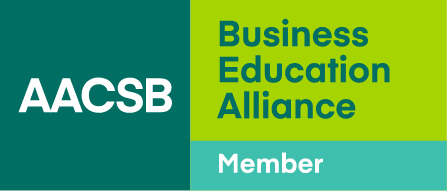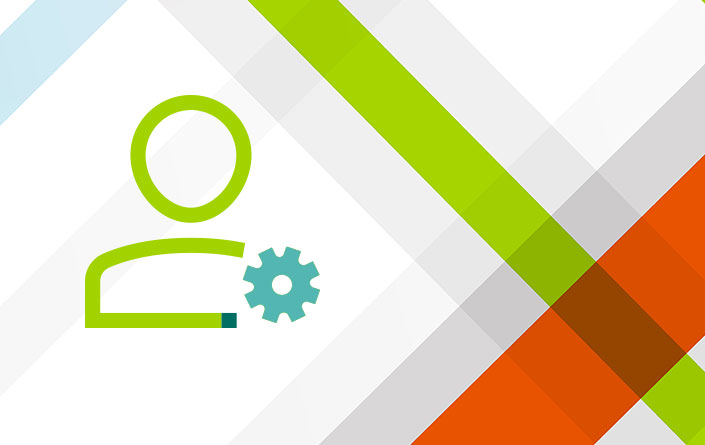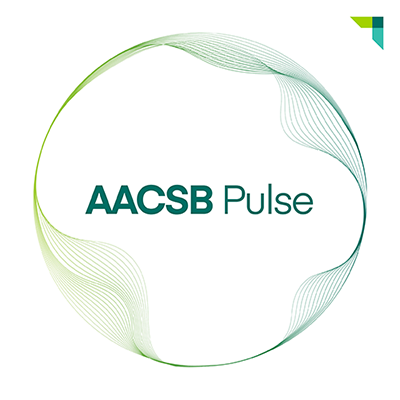Beyond the Hype: AI’s Role in Business Education
- Students at Suffolk University’s Sawyer Business School master the four pillars of the SAIL Framework: social intelligence, AI literacy, innovation/inquiry, and leadership.
- Through the Prompt Alchemy competition, students use real data from an e-commerce company to gain insights into customer behavior, logistics efficiency, and market segmentation.
- During the competition, students make fairness and responsibility core elements of business strategy, always considering the ethical aspects of their recommendations.
The classroom is buzzing. Students cluster around laptops, voices animated as they debate strategy.
“Try being more specific about customer segmentation,” one suggests. Another jumps in: “What if we analyze seasonal patterns first, then dive into regional differences?” A third student cautions, “We need to make sure we’re not penalizing rural sellers with poor infrastructure.”
These aren’t computer science majors wrestling with code—they’re business students at Suffolk University’s Sawyer Business School (SBS) in Boston. They’re deep in our “Prompt Alchemy” competition, where the art of crafting effective AI prompts determines who wins. What’s impressive isn’t just their technical skill, but how naturally they weave ethical considerations into business strategy.
At SBS, we’re developing an approach to AI that goes beyond focusing on technical skills. We want students to think strategically about how to use AI tools—and we want to help them develop the human capabilities that will set exemplary business leaders apart in our increasingly automated world.
Why Technical Skills Alone Miss the Mark
The numbers are compelling. According to the Educational Advisory Board (EAB), job postings requiring generative AI skills have jumped 644 percent since ChatGPT launched. That figure dwarfs the impact of previous tech booms, such as fintech (which saw a 104 percent increase in job listings that required related skills) and smart manufacturing (25 percent).
But here’s what caught our attention: While about 5 percent of knowledge jobs need advanced AI skills, roughly 70 percent require only basic AI literacy. The real differentiator won’t be technical wizardry—it will be knowing how to blend AI tools with human judgment, critical thinking, and ethical reasoning.
When universities create standalone courses that are heavy on technical implementation, they risk creating an unfortunate divide. Students with coding backgrounds take off immediately, while equally capable students from other backgrounds struggle to see how the material connects to their goals.
At SBS, we realized that it required more than technical training to prepare graduates for leadership in a business world transformed by AI. That’s why we created the Sawyer AI Leadership Collaborative (SAIL), a framework built on four pillars: social intelligence, AI literacy, innovation/inquiry, and leadership. Faculty incorporate these pillars into coursework, case studies, and cross-disciplinary projects, ensuring students consistently practice blending technical AI capabilities with human judgment, ethical awareness, and strategic insight.
Testing Ideas Through Real Competition
One of the central components of the SAIL approach is Prompt Alchemy, a competition open to all undergraduate and graduate business students at SBS. It’s designed to transform students from passive AI users into strategic AI directors.
The inaugural Prompt Alchemy competition engaged 19 students across multiple teams, representing both undergraduate and graduate programs. During that first event, held last April, students were provided real data from Olist, a Brazilian e-commerce platform, and challenged to uncover meaningful business insights from 100,000 orders.
The real differentiator on the job won’t be technical wizardry—it will be knowing how to blend AI tools with human judgment, critical thinking, and ethical reasoning.
Teams dug into customer behavior, logistics efficiency, and market segmentation. One standout team found fascinating patterns in how different product categories performed across Brazilian regions, discovering that Southeast regions preferred electronics while Northeast regions favored home goods. These insights led to recommendations for region-specific marketing campaigns that respected cultural and economic differences.
“What impressed us most was how students turned data into strategy,” noted one faculty judge. “The winning team didn’t just find patterns—they explained why those patterns mattered and gave us recommendations we could actually implement.”
The competition shifted how students think about AI’s role in business decisions. “I used to think AI either gave you the right answer or it didn’t,” explained one senior. “But it’s actually more like working with someone who needs really clear instructions and ethical guardrails. The better you are at asking questions and checking the results, the better it works.”
The SAIL Framework in Action
We directed students in the Prompt Alchemy competition to build their solutions around the four pillars of the SAIL framework—social intelligence (how do we connect?), AI literacy (how does it work?), innovation/inquiry (what’s missing or wrong?), and leadership (should we do this?). Although this is the formal order of the acronym, during the competition, students encountered the pillars in a slightly different sequence. They began with AI literacy, moved into innovation/inquiry, then addressed social intelligence, and finished with leadership.
We expected them to focus on technical prompting skills—and they did. But we were caught off guard by something else that happened during the first competition. Students grappled with fairness and responsibility as core elements of business strategy, not compliance afterthoughts. These ethical considerations were balanced with the other three elements of the framework.
AI literacy. Students mastered the mechanics quickly. One team used role-based prompting to analyze Brazilian e-commerce data as marketing leads, then switched perspectives to examine the same data set as product managers. Another group applied multiperspective analysis, layering chain-of-thought reasoning with constraint specification to analyze high-sales categories with low reviews while cross-referencing GDP data.
“We weren’t just asking AI for answers,” explained one student. “We were teaching it to think through problems the way we would.” This was AI literacy in practice: Students understood not just how to prompt, but when different approaches worked and why.
Innovation/inquiry. Compelling insights emerged when students questioned AI’s findings. We called these the “Wait, that’s weird” moments. One group found that top-selling categories in São Paulo had terrible reviews. A less thoughtful analysis would have celebrated the sales figures. Instead, team members dug deeper.
“The AI told us smartphones and furniture were killing it in revenue,” one student reflected. “But when we prompted it to analyze customer satisfaction by economic level, we realized we were basically taking advantage of people’s expectations. High-income customers expected more and were getting disappointed.”
Another team discovered that sellers with the highest average order values had surprisingly few total orders—a pattern that warranted investigation for potential fraud or tax misreporting. Through this lens of innovation/inquiry—the ability to spot what’s missing or misleading—students separated strategic thinking from data regurgitation.
During the first competition, students grappled with fairness and responsibility as core elements of business strategy, not compliance afterthoughts.
Social intelligence. Raw analysis means nothing if nobody acts on it. Students quickly realized they needed to tailor their findings for different audiences.
For instance, the members of one team didn’t just identify high-performing product categories. They created specific recommendations for marketing teams (“promote top-selling categories with high ratings”), inventory managers (“focus on high-revenue categories with strong ratings”), and customer experience staff (“create loyalty programs for top-rated categories”).
“We learned that the same insight needs completely different framing depending on who’s listening,” noted one student. The best teams went further, anticipating objections and addressing potential concerns about regional fairness in their implementation recommendations.
Leadership. Here’s what we didn’t expect: Students consistently raised ethical considerations without prompting. When analyzing seller performance, one team flagged that its recommendations could “penalize rural sellers with poor infrastructure” and suggested “promoting fairness in fulfillment benchmarking across regions.” Another group recommended “machine learning audit trails” to ensure fair treatment while detecting genuine issues.
During their regional analysis of sales across Brazil, students immediately noted the need for “equity of access” when recommending different strategies for Southeast versus Northeast regions. One team wrote, “We need to avoid strategies that lead to regional sales monopolies while encouraging sustainable logistic solutions.”
This wasn’t checkbox ethics—it was strategic thinking. Students recognized that achieving a sustainable business advantage requires stakeholder trust and that AI recommendations can inadvertently perpetuate bias if not carefully considered.
The Integration Effect
What made the framework powerful wasn’t any single pillar, but how all four reinforced each other. AI literacy enabled students to extract meaningful insights. Innovation/inquiry helped them question and refine those insights. Social intelligence made insights actionable. Leadership ensured recommendations were sustainable.
“I used to think AI was about getting the right technical answer,” reflected one student after the competition. “Now I realize it’s more like conducting an orchestra—you need to know when to bring in different instruments, but you also need to make sure the whole performance serves the audience.”
We use the orchestra conductor metaphor a lot with our students. Conductors don’t play every instrument, but they know when to bring in the violins versus the brass section. That’s exactly what our students learned to do with AI—determine which tool to use when, while directing the whole composition with their human judgment.
Practical Steps for Business Schools
We’ve been able to implement the SAIL Framework without making massive new investments. Instead, we’ve strategically reconfigured existing resources—as if we’re following a recipe using ingredients we already have.
Our new approach taps existing faculty expertise across departments. Information systems faculty bring technical knowledge, marketing professors add consumer behavior insights, and ethics specialists ensure responsible implementation. This combination creates a multidisciplinary approach that mirrors how AI actually gets deployed in the business world.
The SAIL ethos emphasizes starting small, experimenting boldly, and balancing technical possibility with human judgment. This approach shapes leaders ready to navigate an AI-driven world.
For schools wanting to try something similar, here’s our roadmap:
Start with coalition-building (social intelligence). Host an informal session where faculty from different departments share how AI already touches their fields. You’ll be surprised who steps forward—sometimes it’s the colleagues you least expect, and those connections often spark the strongest collaborations.
Create sandbox experiences (innovation/inquiry). Launch a low-stakes AI challenge where student teams experiment with real-world data sets to simulate business problems. Our own pilot—the Prompt Alchemy competition—began this way and has since grown into a broader learning model that embodies SAIL’s spirit of innovation and inquiry.
Design for diverse learners (AI literacy). Pair conceptual frameworks with hands-on labs, visual demonstrations with written case studies. When teaching prompt engineering, for instance, we use role-playing exercises alongside technical tutorials—helping students understand not just how AI works, but how it can be applied across contexts.
Integrate, don’t add (leadership at the institutional level). Rather than creating new courses from scratch, weave AI modules into existing ones. A negotiations class becomes Negotiating With AI Assistants. A strategy course explores Competing in AI-Driven Markets. This approach signals institutional leadership by embedding AI across the curriculum.
Emphasize judgment over tools (leadership at the individual level). The specific AI platforms will change; the ability to evaluate when and how to deploy them won’t. Teaching students to ask “Should we use AI here?” before “How do we use AI here?” usually leads to the most important debates—and develops the leadership judgment today’s business world demands.
Together, these steps reflect the SAIL ethos: starting small, experimenting boldly, and always balancing technical possibility with human judgment. For us, the framework has become more than a guide for teaching—it’s a way of shaping leaders ready to navigate an AI-driven world.
Preparing Leaders for an AI-Enhanced Future
As AI reshapes business practices, Sawyer Business School is positioning graduates to thrive not by competing with artificial intelligence, but by developing the uniquely human capabilities that complement it.
We’re not just tacking AI onto our existing courses—we’re rethinking how we prepare students for a world where working effectively with AI is a core business skill. In this new landscape, the most valuable professionals won’t be those who have mastered every AI tool, but those who know how to lead with AI while keeping the human insight that technology simply can’t provide.
We acknowledge that this approach is still evolving, and we continue learning from both successes and setbacks in implementation. We welcome dialogue with other institutions exploring similar paths.






